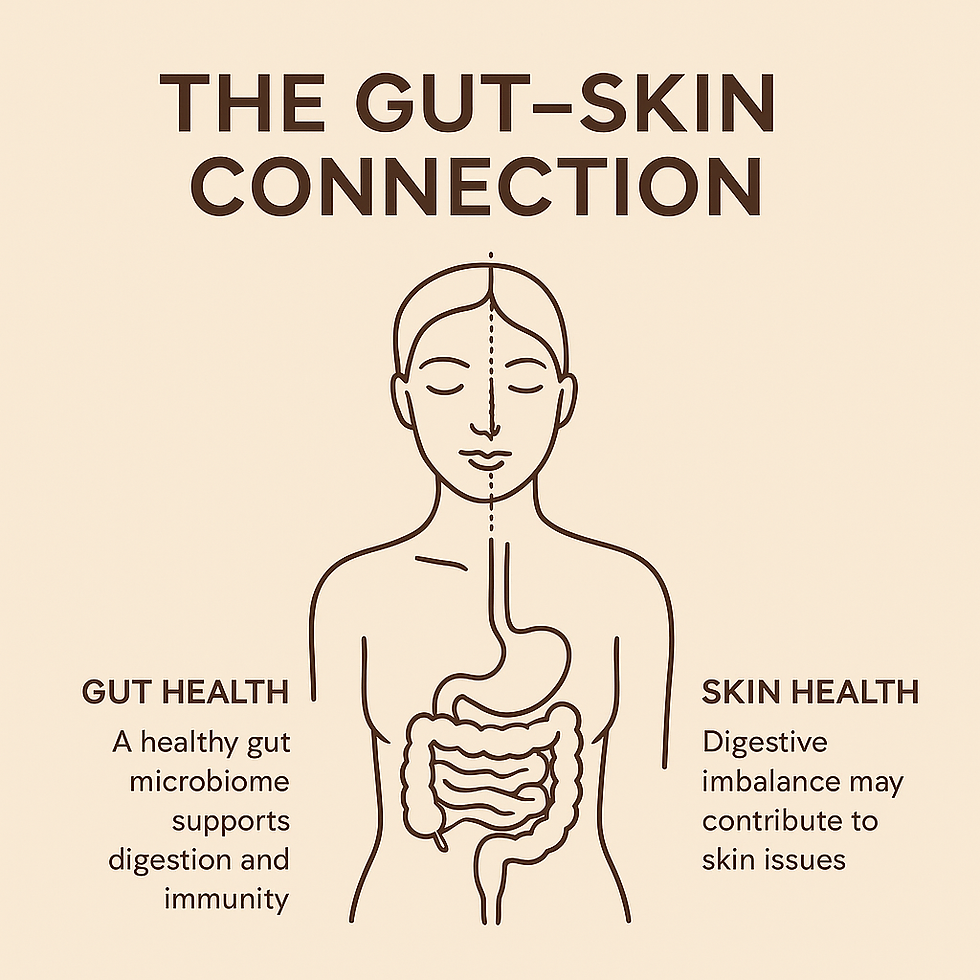The science behind self tan
- Lyndall Innes @evolvebylyndall
- May 31, 2019
- 4 min read
Updated: Apr 6, 2020
It's that time of year again when we all hideaway in what Perth calls winter. On go our light jackets and we stay indoors with Netflix. Sadly tough social events still happen in winter and this means that most of us still get spray tans or reach for the DIY tan in a can at home.
Now as a self-proclaimed goth I actually avoided doing spray tans up until about 5 years ago but when I finally succumbed to learning I found them absolutely fascinating and here is why.
The main active ingredients in self-tan products are dihydroxyacetone or DHA (originally sugar cane or sugar beat extract but now created more safely in a lab environment)
Self-tan was discovered in the 1950s when it was being used as a sugar substitute in a clinical trial for diabetes patients. As the beauty legend goes, a nurse caring for the children in one of the diabetes studies was vomited on during her daily duties and noticed that where the vomit touched her skin it stained the skin a golden colour afterwards. So in 1959, the first self-tanning product was born.

DHA works by reacting with nitrogen compounds that are found in the amino acids in the protein in the outermost layers of your skin. It causes brown coloured compounds. DHA creates what is called a Maillard reaction, which is a non UV browning reaction - like when a steak sears in a pan.
Once the DHA reacts with the skin proteins and turns them brown, it is a permanent reaction that can only be removed by exfoliating the skin and physically sloughing the coloured skin cells away. Think a scrubbing mitt!
The tan colour is affected by the thickness of the skin cells to which the tan is applied. This makes sense, because the more skin cells available that the tan can react with, the more visible colour there will be. This is why the elbows and knees can show more colour and appear darker. On the other hand, if you are someone to whom tan doesn't stick, then its likely that you have a thinner stratum corneum (dead skin cell layer) on your skin.
Amino Acids in the skin also vary from one person to the next and this can affect the type of colour a tan will go. Some amino acids react to DHA with more yellow and orange tones instead of the beautiful bronze colours we know and love. That's why a tan solution that your best friend or someone on Instagram might love might not work the same way for you.

DHA is a very reactive compound so its rarely formulated with too many other active ingredients but it is usually mixed with Erythrulose, a carbohydrate that reacts more slowly on the skin. It doesn't last as long as DHA on the skin and add warmer red tones making the colour more natural. Antioxidants are used in tan solutions to help to stabilise the solution.
Most fragrance products react to the DHA in self-tan, which is why so many of our favourite tanning products now smell like coconut - it doesn't react with the formula.
The good news about DHA is that it has been used as an active ingredient in cosmetic products for so long that is has been very well studied for its safety. Because it's used as a colourant it is very strictly monitored and has been shown to have no absorption past the stratum corneum (top skin cell layer) thus no absorption into the bloodstream. An allergic reaction is very rare - there are very few reactions recorded during extensive monitoring.
The only danger as far as I can see is the free radical production increases when the DHA is exposed to sunlight while still reacting with the skin. Free radicals are the species which cause photo ageing (sun-induced wrinkles and other signs of ageing) In this study it was shown that 20% DHA increases the free radical production by 180% so only 3 times the amount of normal unprotected sun exposure and a 20% DHA formula would be hard to come by with most only having 8-15% DHA. This has also been taken care of by the formulation of modern tan solutions having some extra ingredients such as the antioxidants. However, if this is something that makes you nervous, apply your tan in the evening :).
In a completely unrelated and slightly evil 2008 study DHA has been found to cause severe contact dermatitis in Mexican hairless dogs. So please do not apply a tan to your puppies. This always makes me think of Paris Hilton for some ungodly reason.
I use the Bondi Sands professional spray tan solution in my salon. I love the beautiful natural-looking colour and that its a cruelty-free, Australian made and owned brand. The professional spray comes in all your favourite shades with medium, dark, liquid gold and for the brave ultra dark. Bondi sands have a blue/green base that is the opposite side of the colour wheel to red/orange so the tan cancels out any unwanted tones.
Want to see what all the fuss is about? My spray tans are $25 or $35 if you bring a friend and you can book online using this link
Do you have a nerdy skin question you want me to look in to? Let me know at your next appointment or you can email me at inneslyndall@gmail.com
This post is dedicated to my beautiful friend Hayley Urguhart.



Comments